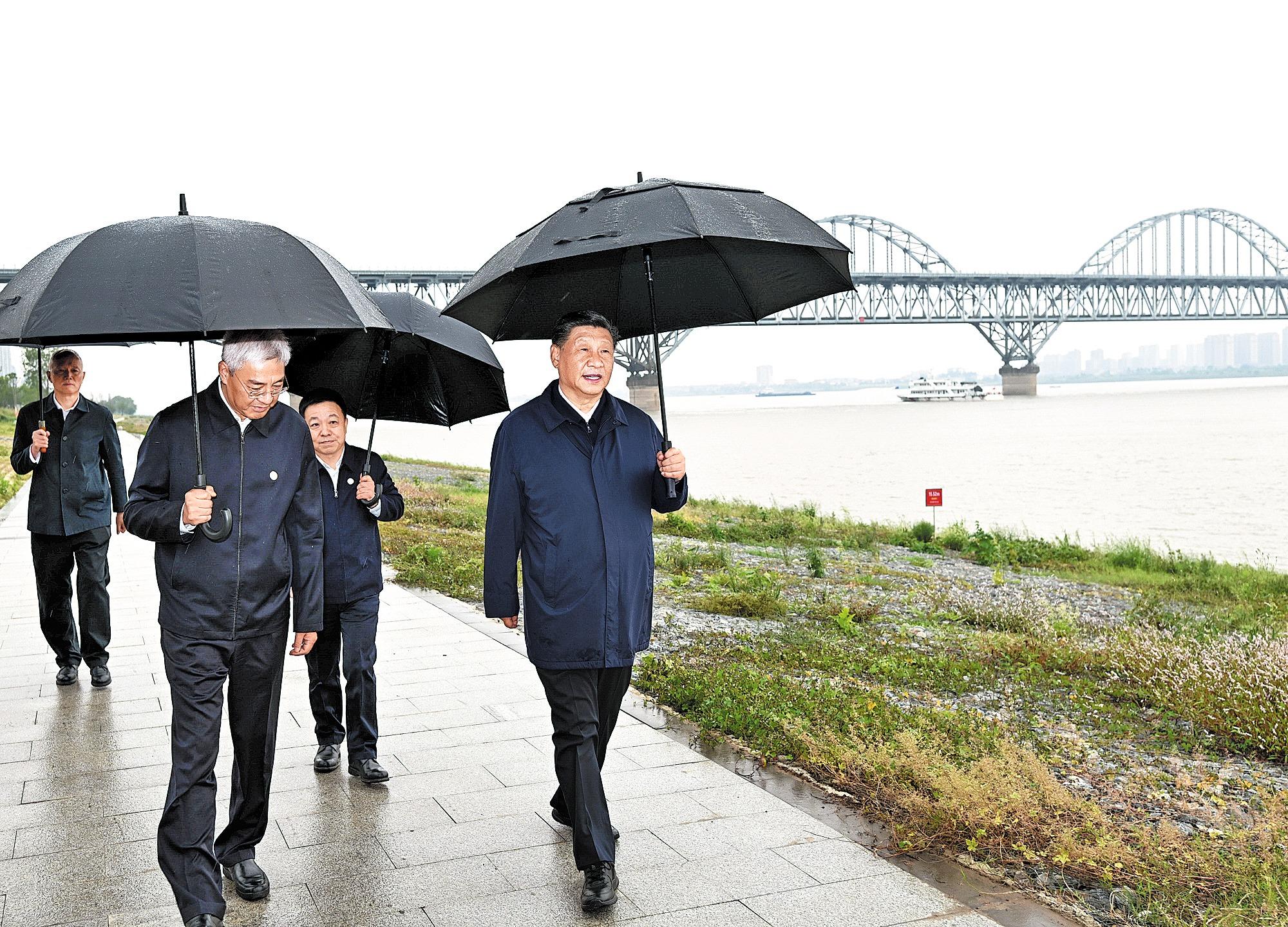Global gathering set to mark 10 years of landmark vision, outline road map for growth
 Xi Jinping, general secretary of the Communist Party of China Central Committee, inspects a section of the Yangtze River National Cultural Park in Jiujiang, Jiangxi province, on Oct 10. He learned about local efforts in the construction of the park and ecological restoration along the Yangtze River shoreline. Xi also inspected Sinopec Jiujiang Co and learned about the petrochemical company’s transformation toward green development. (PHOTO / XINHUA)
Xi Jinping, general secretary of the Communist Party of China Central Committee, inspects a section of the Yangtze River National Cultural Park in Jiujiang, Jiangxi province, on Oct 10. He learned about local efforts in the construction of the park and ecological restoration along the Yangtze River shoreline. Xi also inspected Sinopec Jiujiang Co and learned about the petrochemical company’s transformation toward green development. (PHOTO / XINHUA)
President Xi Jinping will attend the opening ceremony of the third Belt and Road Forum for International Cooperation, a global gathering that will help outline a road map for the future growth of the landmark vision and build up consensus for cooperation between China and its BRI partners.
Xi will deliver a keynote speech at the opening of the forum, which will be held in Beijing on Oct 17 and 18, Foreign Ministry spokeswoman Hua Chunying announced on Oct 11. The president will also hold a welcome banquet and bilateral events for the guests attending the forum.
Under the theme “High-quality Belt and Road Cooperation: Together for Common Development and Prosperity”, the forum, to be held on the 10th anniversary of the Belt and Road Initiative, is set to bring together representatives from over 130 countries and more than 30 international organizations.
Qu Bo, director of the Institute of International Relations at China Foreign Affairs University, said the gathering next week, the largest diplomatic event hosted by China this year, could be monumental as it will outline a new road map for the high-quality development of the BRI in the coming decade.
Xi’s speech at the opening ceremony is expected to be a policy address of major global significance, with the global community looking for clues on how Beijing will integrate the BRI with other major initiatives also put forward by Xi, such as the Global Development Initiative, the Global Security Initiative, and the Global Civilization Initiative.
“The fact that representatives from so many countries and international organizations will be present at the forum speaks volumes about the level of global support for the BRI,” Qu said.
“What is more important is that it shows that so many countries have benefited from the initiative,” he added.
Beijing had signed Belt and Road cooperation documents with more than 150 countries and over 30 international organizations as of June, according to a white paper released on Oct 10. From 2013 to 2022, the cumulative value of imports and exports between China and its BRI partner countries reached $19.1 trillion.
In addition to the opening ceremony and bilateral meetings, the forum will feature a wide range of side events, including a CEO conference. Three high-level forums on connectivity, green development, and the digital economy will be held. There will also be six thematic forums on trade connectivity, people-to-people connectivity, think tank exchanges, a clean Silk Road, subnational cooperation, and maritime cooperation.
Zhou Taidong, vice-president of the Center for International Knowledge on Development, said the forum’s agenda reflects the principles upheld in BRI cooperation and offers clues for its future development.
“The BRI has always been committed to open, green, and clean cooperation toward inclusive and sustainable development,” he said. “In the future, the BRI will continue to prioritize connectivity and the growth of the digital economy, further advance green development, and ensure the stability and smooth operation of industrial and supply chains.”
Yan Haisi, deputy general manager of corporate banking at Bank of China, said on Oct 11 that the bank will enhance efforts to strengthen the BRI and help advance China’s high-standard opening-up.
“We will continue to explore BRI markets to promote the smooth operation of industrial and supply chains, and help deepen bilateral and multilateral cooperation for building industrial capacity,” said Yan.
The bank has branches in 64 countries and regions, including 44 participating in the BRI. It will support key traditional infrastructure like railways, ports, and telecommunications as well as “new infrastructure” projects related to green development, the digital economy, and innovation.
The white paper on the BRI published by the State Council Information Office on Oct 10 stated that as of the end of June, 13 Chinese-funded banks had established 145 first-tier offices and branches in 50 BRI partner countries.
Contact the writers at xuwei@chinadaily.com.cn


